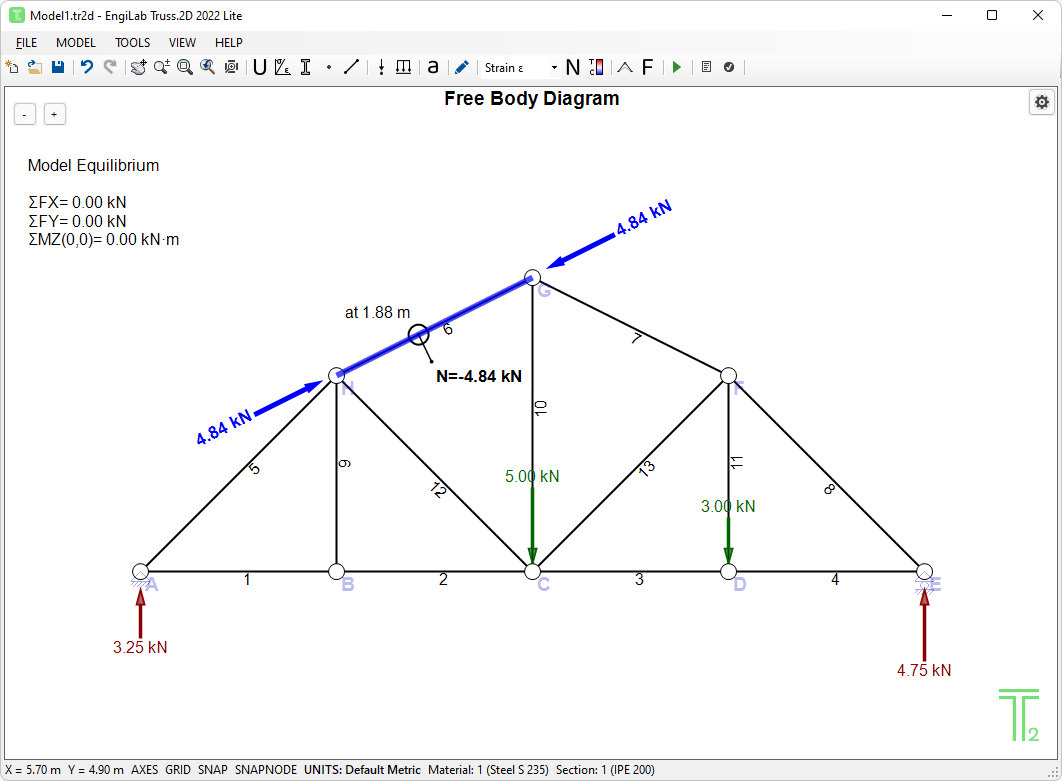
1. Axial Force/Stress/Strain Diagrams
Click ![]() , and select "Force F" on the Dropdown menu (on the left of the
, and select "Force F" on the Dropdown menu (on the left of the ![]() button), to see the Axial Force Diagram. You may take the picture below.
button), to see the Axial Force Diagram. You may take the picture below.
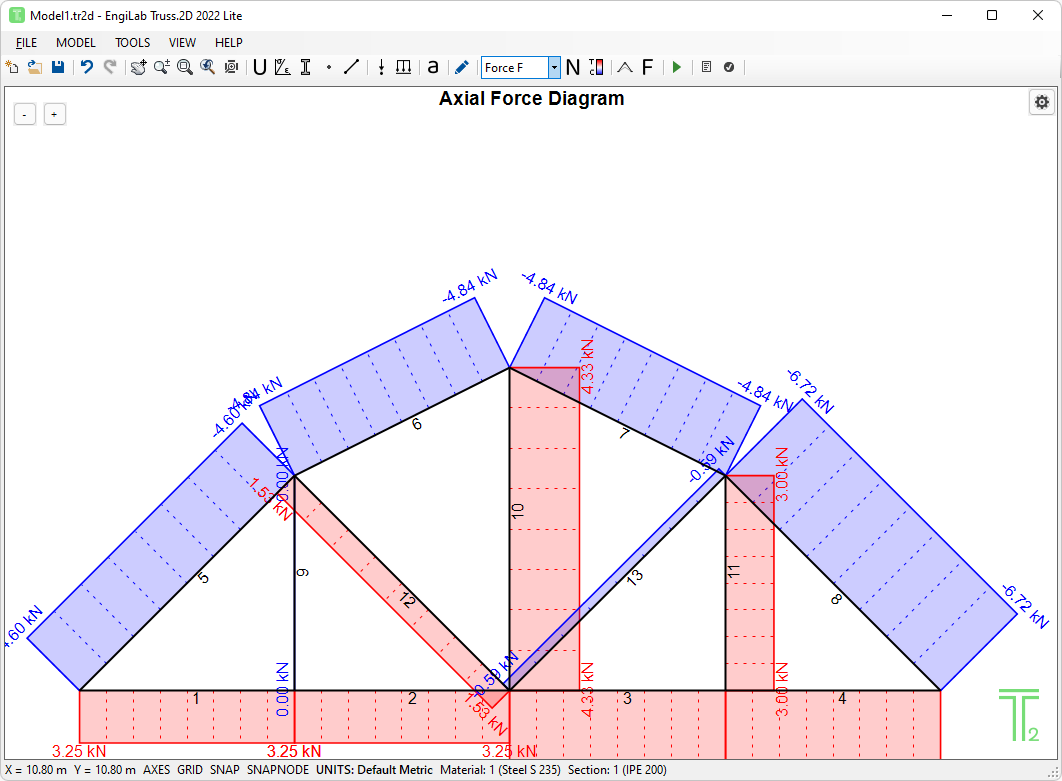
The Axial Force Diagram is out of Scale. Click the "Zoom All" button ![]() to automatically scale the Diagram.
to automatically scale the Diagram.
Now the result should look like this, which is much better. We see that the Force of Element 13 (Member CF) is -0.59 kN, the same as the one we found with Hand Calculations.
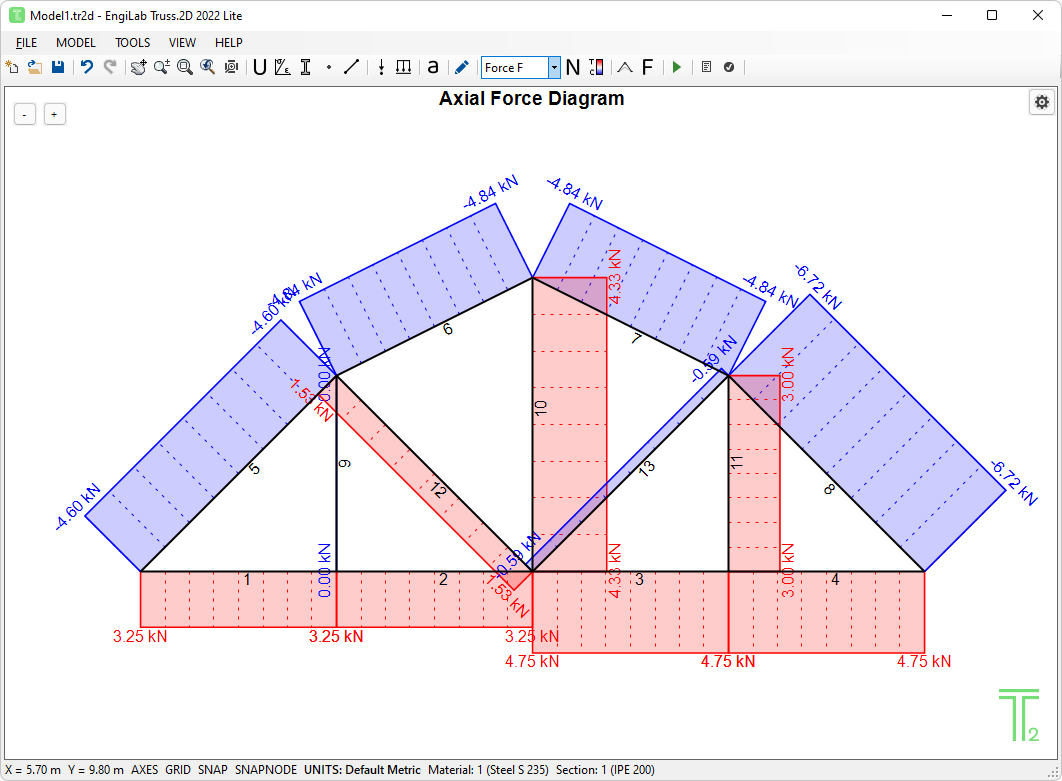
Select "Stress σ" on the Dropdown menu and click ![]() to see the Axial Stress Diagram. If the Axial Stress Diagram is out of Scale, Click the "Zoom All" button
to see the Axial Stress Diagram. If the Axial Stress Diagram is out of Scale, Click the "Zoom All" button ![]() to automatically scale the Diagram. You should take the following picture.
to automatically scale the Diagram. You should take the following picture.
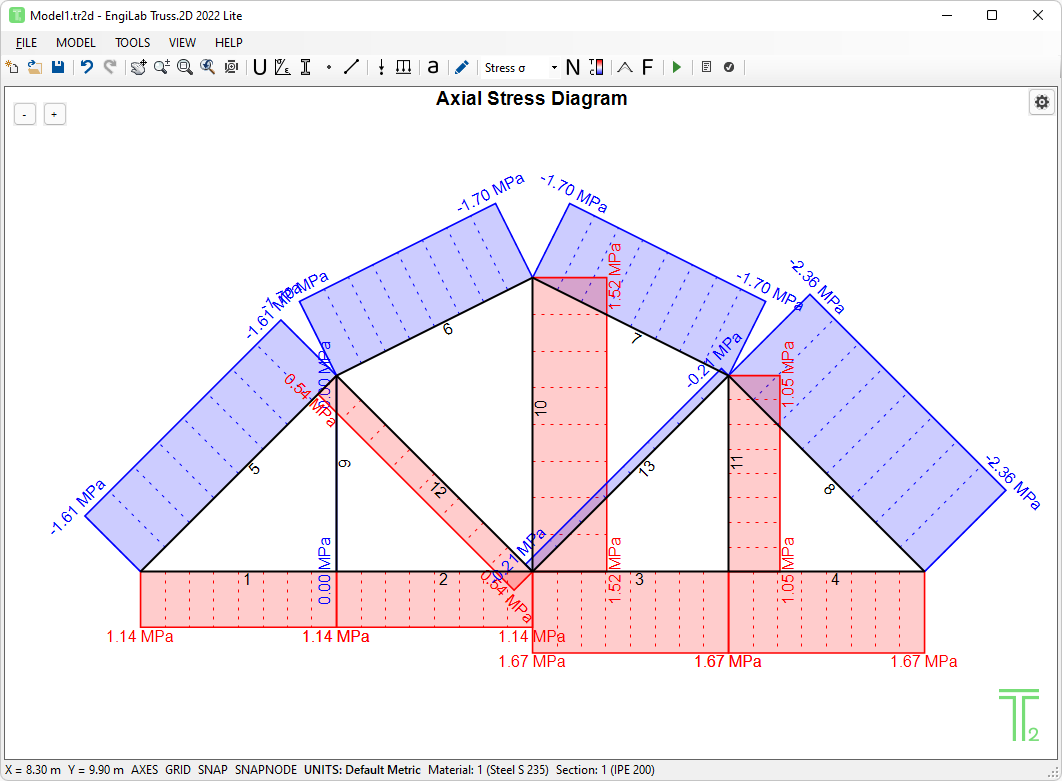
Again, select "Strain ε" on the Dropdown menu and click ![]() to see the Axial Strain Diagram. If the Axial Strain Diagram is out of Scale, Click the "Zoom All" button
to see the Axial Strain Diagram. If the Axial Strain Diagram is out of Scale, Click the "Zoom All" button ![]() to automatically scale the Diagram. You should take the following picture.
to automatically scale the Diagram. You should take the following picture.
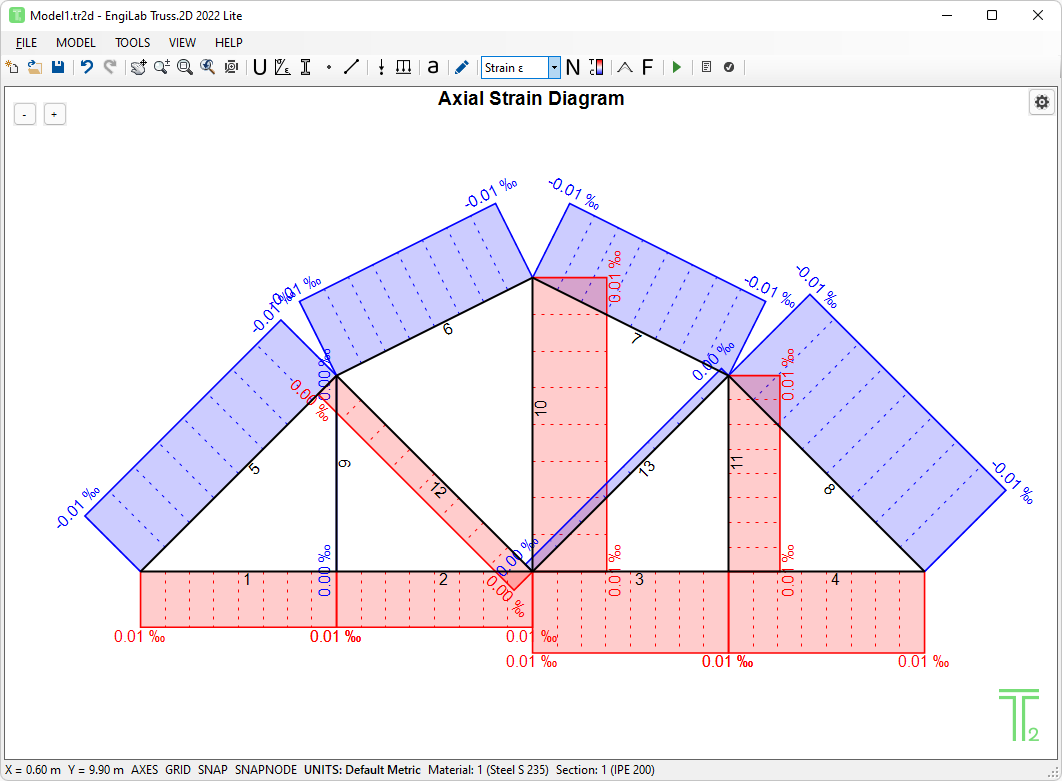
Although the strain is in Permille units (‰), it appears that 2 decimal places are not enough to express it the right way. You may want to increase the number of decimals. To do that, visit the Units form and set the Decimals for strain from 2 to 4. Then you will get more accurate strain values. The Strain Diagram is plotted correctly and is not affected by the number of decimals used. Only the shown values are affected.
2. Axial Force/Stress/Strain Color Plots
Click ![]() , and select "Force F" on the Dropdown menu (on the left of the
, and select "Force F" on the Dropdown menu (on the left of the ![]() button), to see the Axial Force Color Plot. You may take the picture below.
button), to see the Axial Force Color Plot. You may take the picture below.
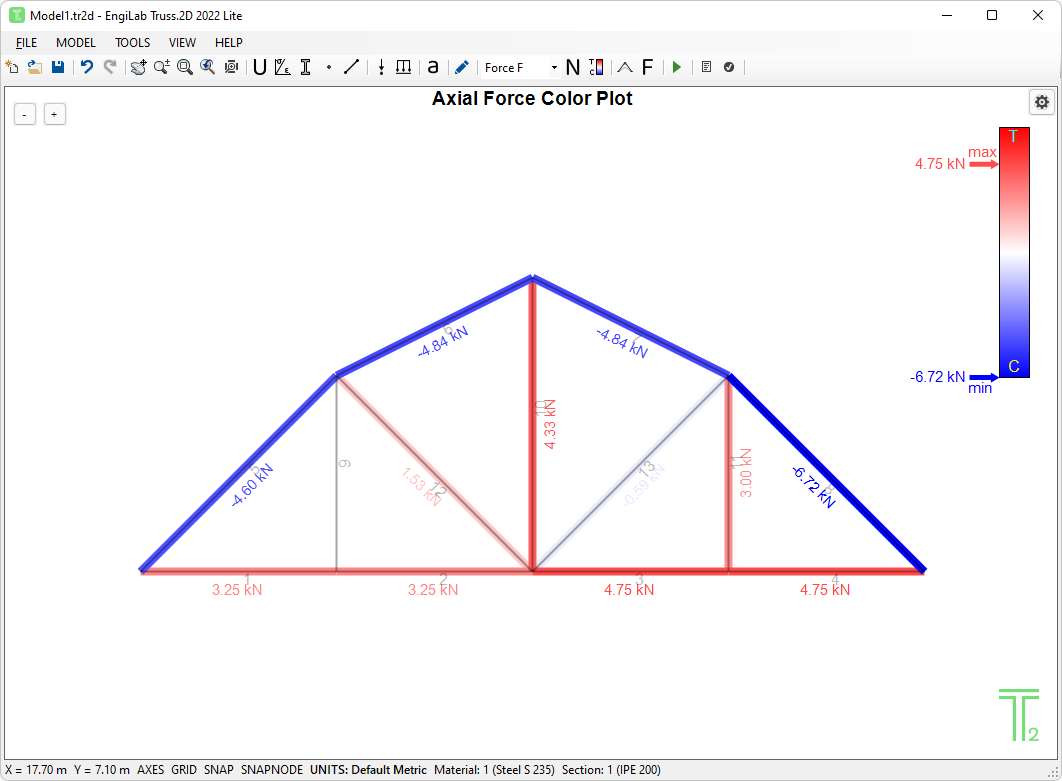
Click the "Zoom All" button ![]() to automatically scale the Diagram. Now the result should look like this. Note that the Color Plot is drawn on the Deformed state of the Model, by default. This is a setting which can be changed in Settings.
to automatically scale the Diagram. Now the result should look like this. Note that the Color Plot is drawn on the Deformed state of the Model, by default. This is a setting which can be changed in Settings.
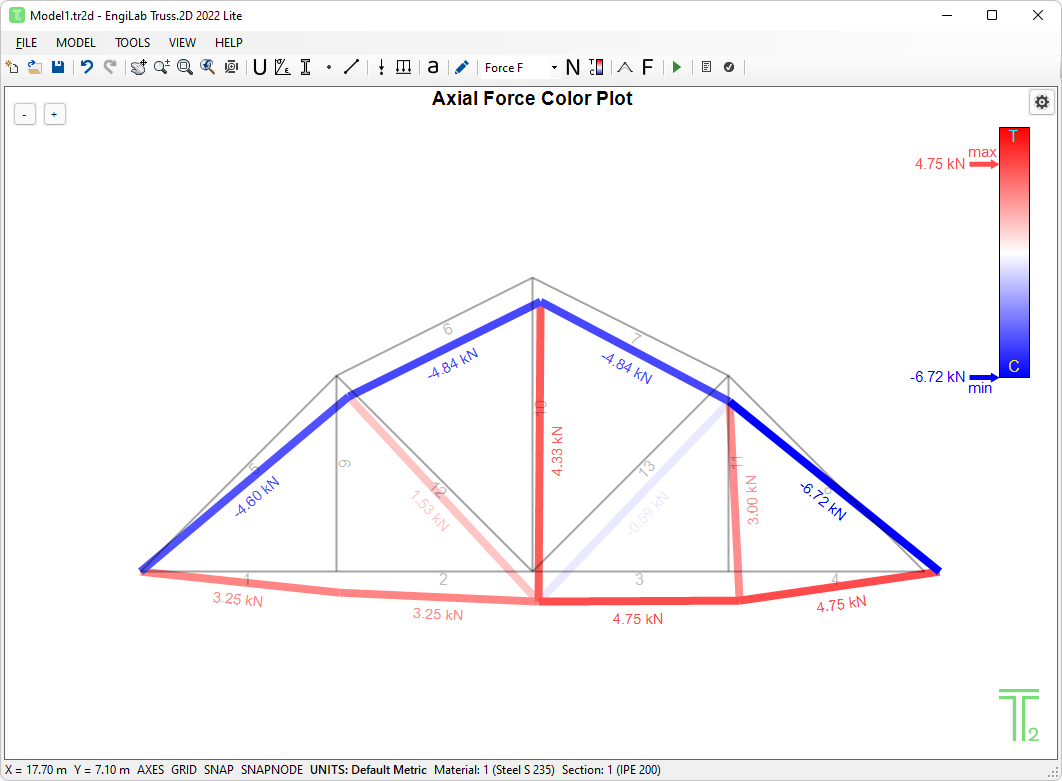
Select "Stress σ" on the Dropdown menu and click ![]() to see the Axial Stress Color Plot. If deformation shown on the Axial Stress Color Plot is out of Scale, Click the "Zoom All" button
to see the Axial Stress Color Plot. If deformation shown on the Axial Stress Color Plot is out of Scale, Click the "Zoom All" button ![]() to automatically scale the Diagram. You should take the following picture.
to automatically scale the Diagram. You should take the following picture.
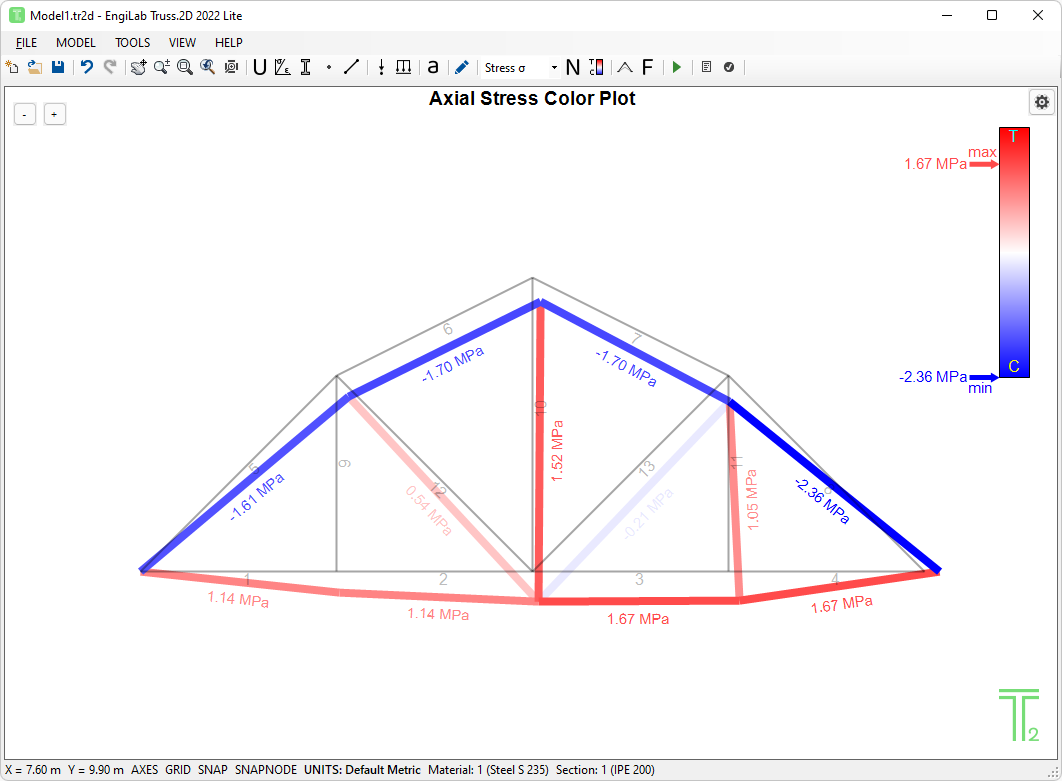
Again, select "Strain ε" on the Dropdown menu and click ![]() to see the Axial Strain Color Plot. Click the "Zoom All" button
to see the Axial Strain Color Plot. Click the "Zoom All" button ![]() to automatically scale the deformation on the Diagram, if needed. You should take the following picture. Note that we have changed the Decimals from 2 to 4 to depict strain values better.
to automatically scale the deformation on the Diagram, if needed. You should take the following picture. Note that we have changed the Decimals from 2 to 4 to depict strain values better.
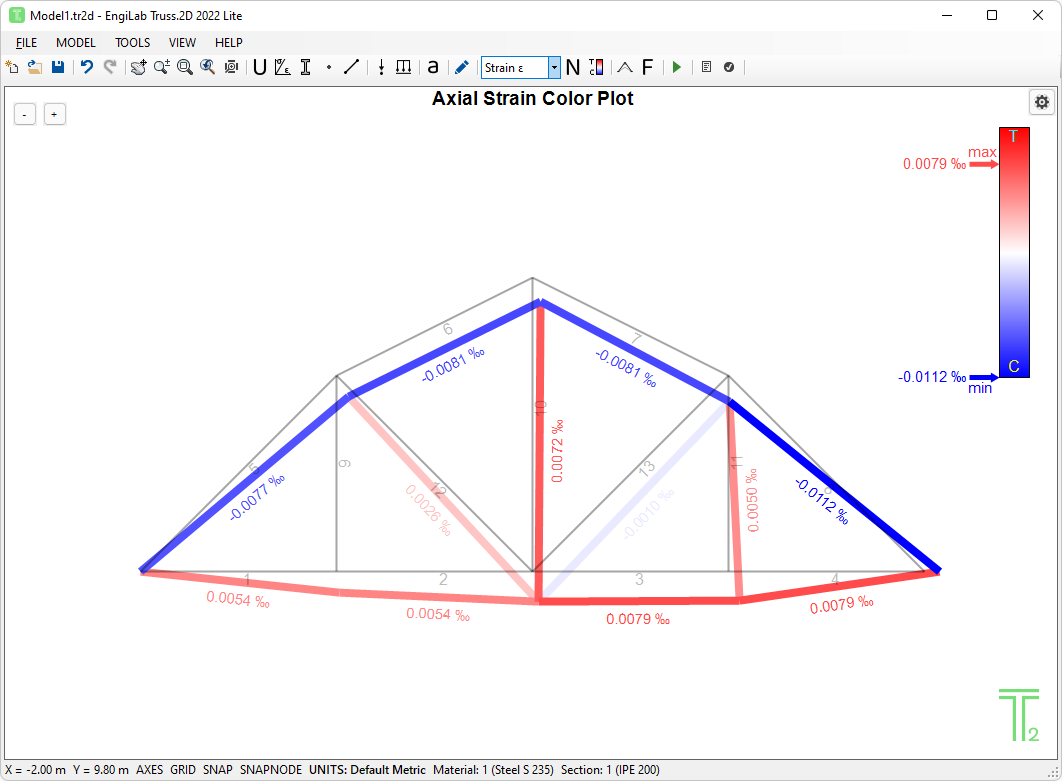
3. Deformation
Click ![]() , to see the Model Deformation. If the Deformation is out of Scale, Click the "Zoom All" button to automatically scale it. You should take the following picture. The program reports also the Deformation magnification, in our example x2859.51.
, to see the Model Deformation. If the Deformation is out of Scale, Click the "Zoom All" button to automatically scale it. You should take the following picture. The program reports also the Deformation magnification, in our example x2859.51.

You can adjust scaling yourself by using the +/- buttons at the top left of the picture. If you click the "+" button a few times, you may get a picture like the one below where the magnification factor is now x7148.77.
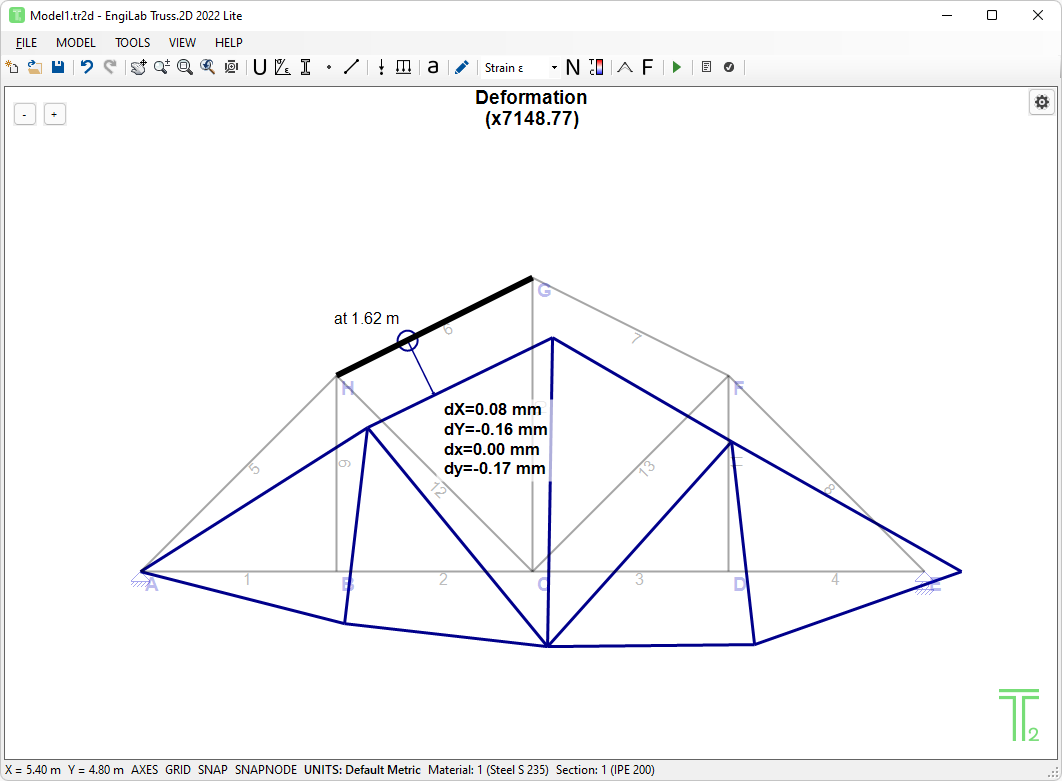
See above that you can get the deformation values on screen, if the mouse pointer hovers over an element.
IMPORTANT: The values that are given on screen are the dX, dY, dx and dy displacements of the corresponding point of each element.
•dX and dY are the X- and Y- displacements of a point, respectively, in Global axes. For example a positive dX means displacement to the right, while a positive dY means displacement upwards.
•dx and dy are the x- and y- displacements of a point, respectively, in Local Element Axes, where x is defined from the Start Node i and the End Node j of the Element and y is perpendicular to it.
4. Free Body Diagram (FBD)
Click ![]() , to see the Free Body Diagram of the Model. The Free Body Diagram shows the support reactions on screen and also the calculations of the equilibrium of the Model.
, to see the Free Body Diagram of the Model. The Free Body Diagram shows the support reactions on screen and also the calculations of the equilibrium of the Model.
We see that the support reactions are the same as the ones found with Hand Calculations.
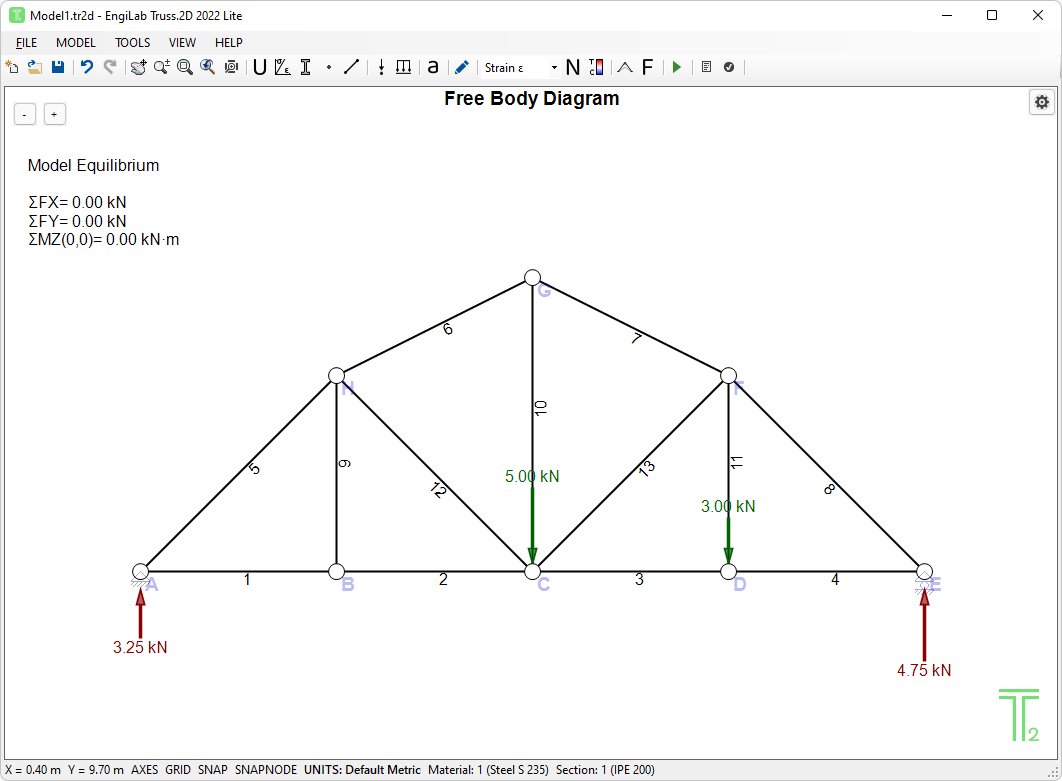
Note that if you hover the pointer over an Element, you can read the corresponding Axial Force at that point, as shown below. The Element End Forces are also given on screen, for the specific Element.
